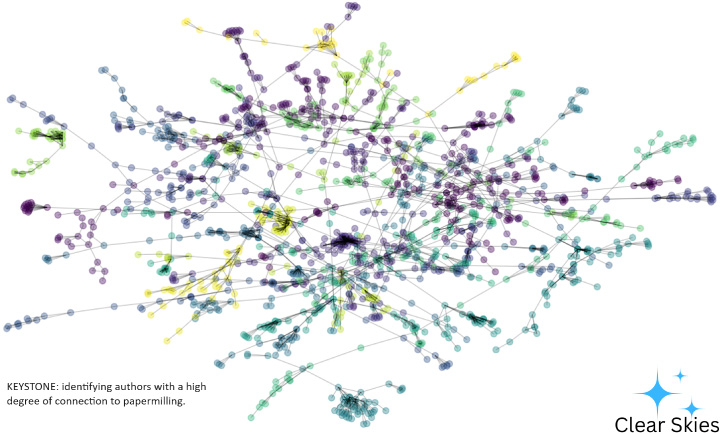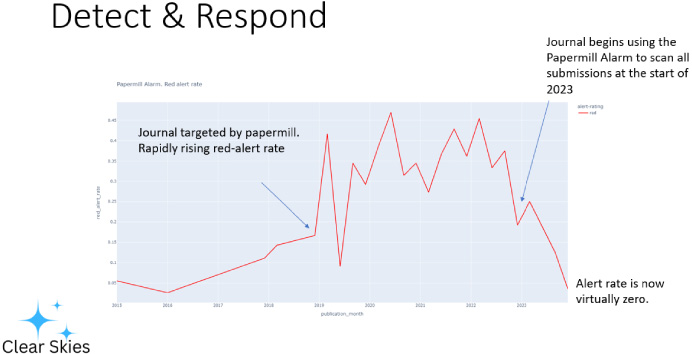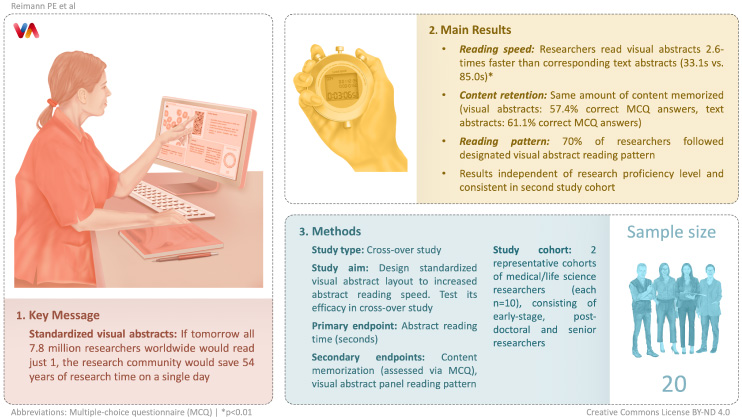Dotcoms to watch: Addressing the scholarly publishing industry’s challenges through technology
Abstract
This paper reports on the Dotcoms to Watch session at Academic Publishing in Europe (APE) 2024. Five out of the seven selected startups that gave a brief presentation in the session expand upon their talks and reflect on their participation. They are Clear Skies, Global Campus, Ludenso, Signals and Visual Abstract. The startups address challenges faced by the scholarly publishing industry and deal with research integrity, identifying and combating papermills, peer reviewer identification and matchmaking, and graphical abstracts.
It has become a tradition at the Academic Publishing in Europe conference for selected start-ups in the industry to give a 5-minute presentation in the Dotcoms to Watch session. This year’s session, moderated by Martijn Roelandse, PhD, STM, Park 56, included the following seven start-ups:
Clear Skies
Consensus
Global Campus
Knowledge Gate Group
Ludenso
Signals
Visual Abstract
For this paper, they were asked to expand on their presentations and share their take-home message from APE 2024.
Clear skies
“Clear Skies is a UK-based data analytics company that offers services to publishers. Clear Skies is the industry leader in identifying fraudulent research papers created by so-called ‘papermills’. Such fake research causes significant harm to the publishing industry and affects sensitive areas of science, such as cancer research. We look forward to working with publishers who share our love of science and our vision of a future free of research fraud.
Fig. 1.
Clear Skies identifies authors with a high degree of connection to papermilling.

Our goal is that organized research fraud will cease to be a worry for publishers. We already have methods that characterize and detect the overwhelming majority of papermill-products. We even have methods to identify the individuals running and supporting the milling process (Fig. 1).
Clear Skies provides unique, industry-level, insight. Our early warning system identifies research fraud before peer-review (Fig. 2). Our dashboard has visualizations giving oversight of trends and patterns in papermill behavior at an industry level as well as at the level of the publisher, journal and article.
Fig. 2.
Clear Skies’ early warning system identifies research fraud before peer-review.

Talking to folks at APE, it’s clear that something has changed. The clever thing about papermills is that they are boring. Milled papers make uninteresting claims and, as such, no one would ever read the papers, let alone scrutinize them. That allowed papermills to hide in plain sight. The millers must have felt pretty safe. So, what changed? Well, now everyone is looking”.
Adam day
Global campus
“Global Campus is on a mission to improve the connection of science and society. We build smart search and matchmaking technology that uses Artificial Intelligence on top of open data.
For publishers, we facilitate the important task of peer reviewer identification. Our open data approach diversifies the pool of candidates, and our best-in-class matchmaking algorithms ensure that there is a close match between reviewer and manuscript. This increases the response rates with a reported 20%.
At APE, we learned that the entire publishing industry is grappling with the opportunities and threat of AI – and that trust and reliability of the industry are very much at the center of attention right now. There is an important role for peer review here, as an important safeguard to the quality of the system. Global Campus is eager to collaborate with publishers and other startups in this domain, and contribute to a strong and trustworthy world of academic publishing, in which reliable and robust results find their way to societal benefit”.
Tijmen Altena
Ludenso
“Ludenso is an innovative edtech company specializing in the creation and distribution of pedagogical 3D models. Our technology allows these models to be viewed both in a 3D viewer (web and mobile) and in Augmented Reality (AR) on mobile devices. With a library of 1500 educational 3D models and growing, Ludenso aims to enhance the learning experience by making complex concepts more accessible and engaging.
Ludenso addresses the challenge of explaining hard-to-grasp concepts through the use of pedagogical 3D models enriched with tailored annotations and AR, making abstract or complex topics more tangible and understandable for students.
Our no-code authoring platform allows educators and publishers to easily tailor 3D model metadata and instantly publish their content to students and readers. Additionally, our AR tools offer end-users an immersive and interactive learning experience, bridging the gap between traditional and digital education methods.
The APE conference highlighted for Ludenso the growing interest among publishers in integrating advanced technologies such as 3D models and AR into their offerings. While comprehensive implementation is still rare, it was encouraging and exciting to learn that many European publishers are beginning to explore and test these innovative educational tools”.
Harald Løvland Manheim
Signals
“Signals helps publishers to identify and prevent publication fraud by papermills. It achieves this by enabling them to gauge the legitimacy of research articles.
The publication of fraudulent research articles erodes trust in the scholarly record and poses an existential threat to publishers. Fraudulent articles are difficult to identify and are regularly submitted to journals. Potentially, hundreds of thousands of these articles are already published. Signals helps publishers identify fraudulent articles at the point of submission so that these articles are never published. It also enables them to identify compromised journals and fraudulent publications in their portfolio so they can prioritize investigations and retract articles where necessary to ensure the scholarly record remains trustworthy.
Signals identifies fraudulent articles using a novel approach. It surfaces robust insights related to the authors of a manuscript using the article’s metadata. A key benefit of this approach is that as articles are engaged with, the metadata and signals improve. This contrasts with typical content-based checks that are in a constant arms race with papermills that will use generative AI to create articles that appear legitimate.
At APE, we were able to confirm that there is significant industry demand for solutions to the papermill problem. On top of this, I was delighted to learn that publishers are keen to collaborate with us on Signals, following positive feedback in the Dotcoms to Watch session”.
Elliot Lumb
Visual abstract
“Visual Abstract wants to improve research and help researchers. We have spent years developing a product that can summarize scientific publications in effective, graphical abstract formats (Fig. 3). This format increases reading speed and content retention. Our vision is that one day, every research publication will be accompanied by such a graphical summary – a Visual Abstract. Imagine this: Currently, researchers save about 50 seconds when they read a Visual Abstract instead of the classic text summary. If every researcher in the world read just one Visual Abstract, 100 years of research time would be saved in a single day! That’s where we want to go.
Fig. 3.
Visual Abstract summarizes scientific publications in effective, graphical abstract formats.

Our startup brings a transformative value to the scholarly publishing industry by offering an affordable and efficient solution to create Visual Abstracts, addressing the time and cost challenges associated with their production. We are perfectly aligned with the exponentially growing industry trend towards visual summaries, meeting the increasing demand for such content among readers and researchers. By partnering with publishers, we provide an attractive incentive for authors, offering a wide range of visual summary formats that enhance the appeal and visibility of their work, especially on digital channels such as social media platforms.
The key takeaway from the APE conference was the industry’s decisive movement towards embracing open access, prioritizing research integrity, and integrating artificial intelligence into various aspects of academic publishing. Additionally, the conference underscored the industry’s renewed commitment to fostering and investing in startups that are helping to drive innovation”.
Benito Campos




